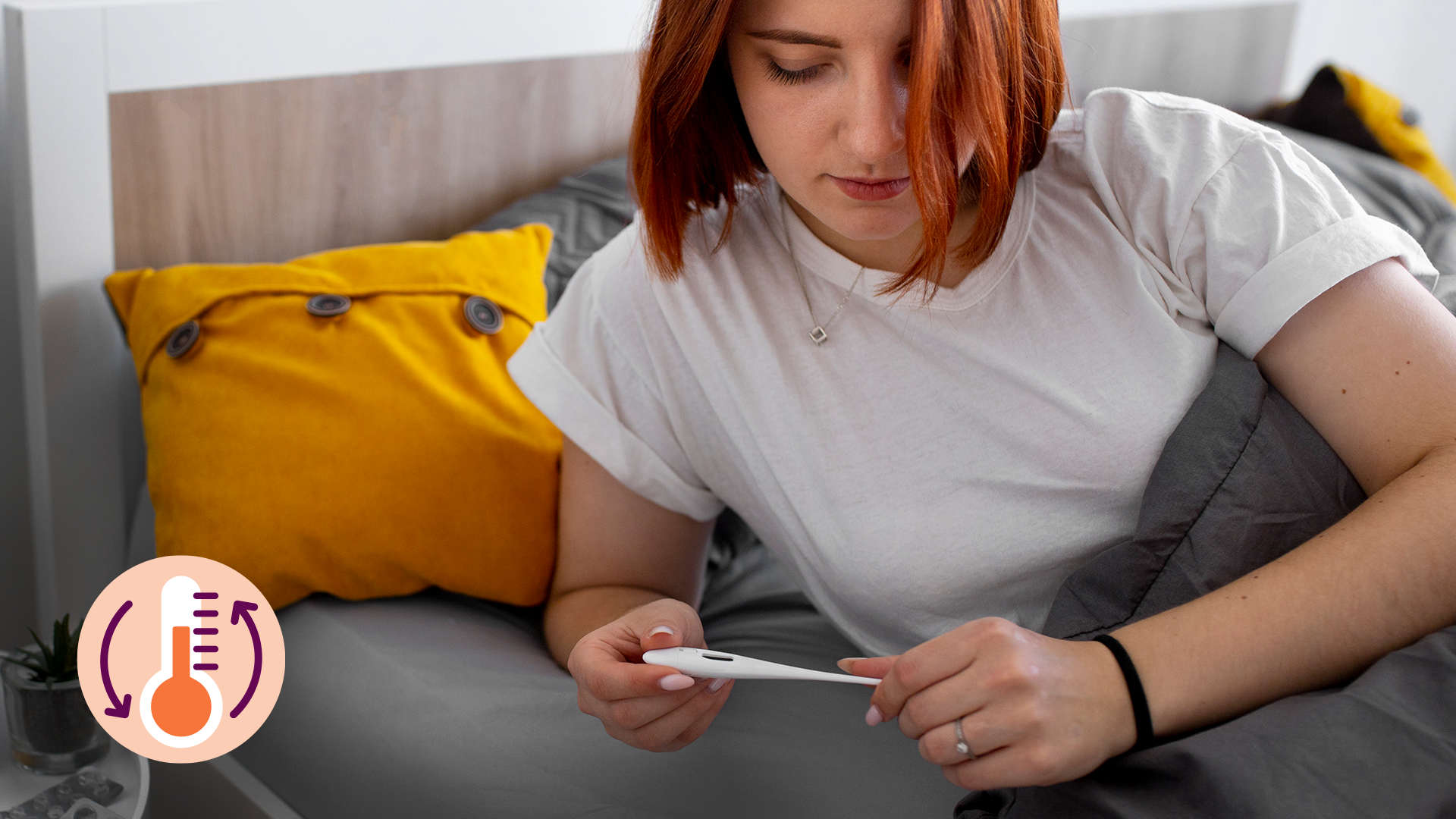If our cycles are regular – about a month apart we assume we are ovulatory – meaning releasing an egg and making normal amounts of progesterone. However, ovulation is highly variable for all women. Progesterone raises our first morning (or basal) temperature a little bit. But so do many other things. Thus “basal body temperature” (BBT) charts, even with mid-cycle stretchy mucus (symptothermal methods) may not be accurate for predicting ovulation. Therefore we developed a valid and scientific use of basal temperature called “Quantitative Basal Temperature” (QBT) to assess ovulation and the luteal phase length (number of days of progesterone elevation).
The Quantitative Basal Temperature Method for Determining Ovulation and Luteal Phase Length
Quantitative Basal Temperature (QBT) Monitoring (called this because we use statistics to decide where the temperature increase occurs—Prior, Clinical Invest. Med ., 1990):
Progesterone, the hormone that is released after ovulation occurs, makes the first morning temperature increase a small but reliable amount. The following recommendations will assist you to accurately take and record your oral temperature using a digital thermometer and the Menstrual Cycle Diary or Daily Perimenopause Diary.
- Day 1 is the first day of your flow (and you should be starting on a new diary).
- Take your temperature in the morning, when you first wake.
- Activity will raise your basal (resting) temperature. Although you may start your thermometer and head to the washroom, if you can, postpone this or getting out of bed until your temperature taking is finished.
- Under ‘Comments’, please record any events that may affect your morning temperature (the time if you slept in or got up early, felt like you were getting the flu or had a very late night).
Using the digital thermometer:
- Press the ON/OFF button and a beep will sound (88.88 will display when the thermometer is used for the first time).
- After a few seconds the display will go blank.
- Place the thermometer under your tongue.
- When the peak temperature is reached (in about 1 minute), a beep will sound 3 times. The reading will not change while the power remains on.
- Turn the thermometer off by pressing the green ON/OFF button. The reading will be stored in memory for 3 seconds the next time you switch the thermometer on. After 3 seconds, the display will go blank and the temperature will be permanently erased from memory.
When you go to fill in your diary in the evening, turn the thermometer on again and record the stored value from that morning in the appropriate spot on your Menstrual Cycle Diary or Daily Perimenopause Diary.
Analyzing your temperature data:
If you would like to figure out whether you have ovulated and the length of your luteal phase (the time following ovulation) you can do that. First, compute the average of all the temperatures in your record, by adding them up and dividing by the number of days for which you have temperature readings. The average temperature you get can then be compared with the actual readings. If your temperature went above and stayed above that average until the day before the next flow you have ovulated. The higher temperatures should last 10-16 days. When there are between 3 and 9 days of higher temperatures, you have what is called a short luteal phase. This means that you have ovulated but the time of progesterone elevation is too short.
Enjoy the keeping of the daily Menstrual Cycle Diary and quantitative basal temperature record. You will learn new things about yourself!
The above instructions are also available as a PDF handout. You will need the free Adobe Acrobat Reader to read and print this article.
